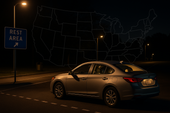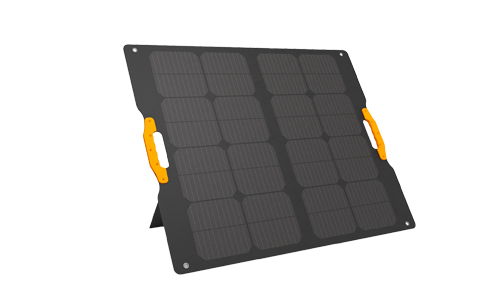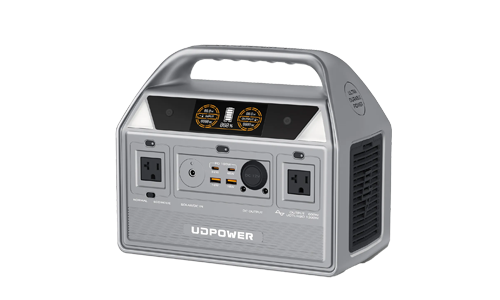Can You Run a TV Off a Portable Power Station?
ZacharyWilliamPortable power stations have become an essential part of outdoor adventures, emergency preparedness, and even off-grid living. With their ability to power various devices, they’re particularly useful for keeping electronics running when you’re away from traditional power sources. But one question that often arises is, can you run a TV off a portable power station?
In this article, we’ll explore how portable power stations can power different sizes of TVs, break down the power consumption of various TV sizes, and help you determine how long a portable power station can run your television.
Table of Contents
- 1. Understanding TV Power Consumption
- 2. How Portable Power Stations Power Your TV
- 3. Estimating TV Run Time Based on TV Size
- 4. Factors That Affect Run Time
- 5. Solutions and Recommendations
- 6. FAQs
- 7. Conclusion

1. Understanding TV Power Consumption
The amount of power a TV uses depends largely on its size, screen type, and usage settings. Below is a breakdown of the power requirements for various sizes of televisions:
| TV Size | Average Power Consumption | TV Type Variations (LED, OLED, QLED) | Estimated Power Consumption Range |
|---|---|---|---|
| 32" TV | 50W - 100W | Standard LED, no smart features | 50W - 150W |
| 42" - 50" TV | 150W - 250W | LED, 4K, Smart features | 150W - 250W |
| 55" - 65" TV | 250W - 400W | LED, QLED, 4K, Smart features | 250W - 400W |
| 75" TV and Larger | 400W - 600W | OLED, QLED, 4K, Smart features | 400W - 600W |
Note: These figures are averages. Actual power usage depends on the screen brightness, resolution, and usage (e.g., watching standard definition vs. 4K content).

2. How Portable Power Stations Power Your TV
Portable power stations work by storing electrical energy in a battery and then providing that energy through AC or DC outputs. Many modern portable power stations feature AC outlets, which are essential for running most home appliances, including TVs.
Key Features:
- Battery Capacity is usually measured in watt-hours (Wh). For example, a 1000Wh portable power station can theoretically provide 100W of power for 10 hours.
- Power Output is measured in watts (W). Ensure that the power station can provide enough output for your TV’s requirements.
- Output Ports: Ensure the power station has the right outlets (AC for TVs).
3. Estimating TV Run Time Based on TV Size
The run time of a TV on a portable power station depends on the power consumption of the TV and the capacity of the power station. Below is an estimation of run times based on typical portable power stations and TV sizes.
| TV Size | Average Power Consumption | Power Station Capacity (Wh) | Estimated Run Time |
|---|---|---|---|
| 32" TV | 50W - 150W | 300Wh | 2 - 6 hours |
| 42" - 50" TV | 150W - 250W | 500Wh | 2 - 4 hours |
| 55" - 65" TV | 250W - 400W | 1000Wh | 2 - 4 hours |
| 75" TV and Larger | 400W - 600W | 1500Wh | 2 - 3 hours |
Calculation Example: A 55" TV with a power requirement of 300W would run for about 3.3 hours on a 1000Wh portable power station (1000Wh ÷ 300W = 3.3 hours). A 32" TV with a power requirement of 100W would run for 3 hours on a 300Wh portable power station (300Wh ÷ 100W = 3 hours).
4. Factors That Affect Run Time
Several factors can influence how long your TV will run on a portable power station:
1. Battery Capacity vs. Power Consumption
A higher-capacity battery (Wh) will generally provide more run time, but the TV's power consumption is the limiting factor. Larger TVs with higher power requirements will deplete the battery faster.
2. TV Settings
Brightness: Higher brightness settings consume more power. Lowering brightness can extend run time.
Volume and Screen Features: TVs with smart features, Wi-Fi connectivity, or high-definition displays (4K, OLED) tend to use more power.
3. Power Station Efficiency
Not all energy stored in a power station is usable. There are losses during the power conversion process (DC to AC). Efficiency can range from 80% to 90%, which means you get a little less usable energy than the rated battery capacity.
4. Environmental Conditions
Extreme temperatures (both hot and cold) can affect the efficiency of the battery in the power station, reducing its overall performance.
5. Solutions and Recommendations
If you're looking to run a TV off a portable power station, here are a few recommendations:
1. Choose a High-Capacity Power Station
To ensure you can run your TV for several hours, choose a power station with a capacity of at least 1000Wh if you’re running a 55" or larger TV. For smaller TVs, a 300Wh or 500Wh station might suffice.
2. Optimize Your TV Settings
Reduce brightness and turn off any unnecessary features (like Wi-Fi or Bluetooth) to minimize power consumption.
3. Consider Solar Charging Options
If you need extended run times for multiple days, consider pairing your power station with a solar panel to recharge it during the day. Many portable power stations support solar charging, which can extend your TV's running time indefinitely in good weather conditions.
4. Use Energy-Efficient TVs
If you’re purchasing a new TV and intend to use it with a portable power station, consider opting for energy-efficient models like LED or low-power OLED displays.
6. FAQs
Q: How long can I run my 32" TV on a 500Wh power station?
A 32" TV typically uses around 100W. On a 500Wh power station, you could expect about 5 hours of run time (500Wh ÷ 100W = 5 hours).
Q: Does using a power station with higher capacity mean I can run my TV for more hours?
Yes, a higher-capacity power station will provide longer run times, but the actual time depends on the power consumption of your TV. Larger TVs or higher brightness settings will shorten run time.
Q: How do I know if my portable power station can handle my TV?
Check the power station’s output rating to ensure it can deliver enough watts for your TV’s requirements. For example, if your TV needs 300W, ensure the power station can provide at least 300W of continuous output.
7. Conclusion
Running a TV off a portable power station is entirely possible, but it depends on the power consumption of the TV and the capacity of the power station. Smaller TVs require less power and can run for longer periods, while larger models may need more robust power stations for extended use. By understanding these factors, you can ensure that you have the right equipment for your needs, whether you’re camping, experiencing a power outage, or simply trying to enjoy some entertainment in a remote location.
Explore our range of high-capacity power stations and start powering your TV anytime, anywhere.


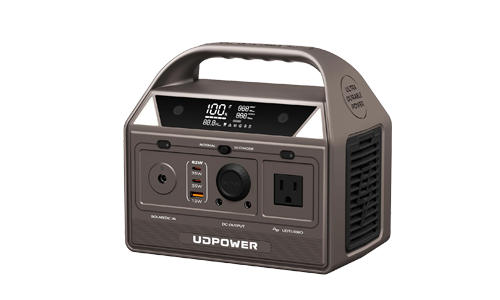
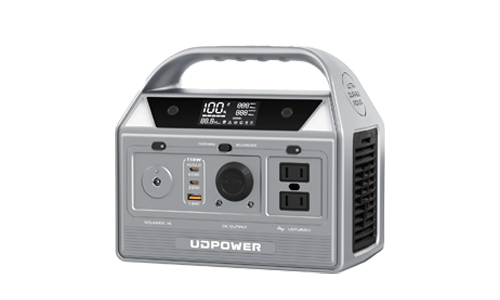
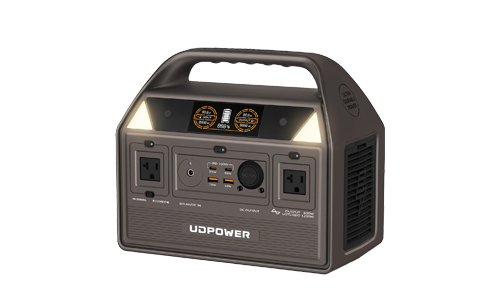
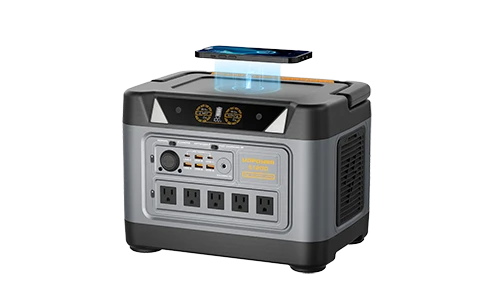
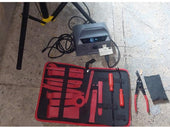

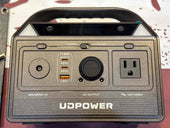
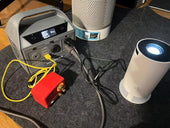
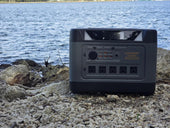
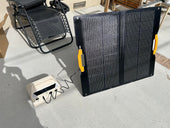














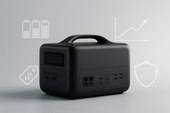







![How to Live In The Woods [Complete Guide]](http://udpwr.com/cdn/shop/articles/Off-Grid_Cabin_Option_f6c94fe7-1ae7-4c3a-baf5-ed9fe684c832.png?v=1763523215&width=170)


